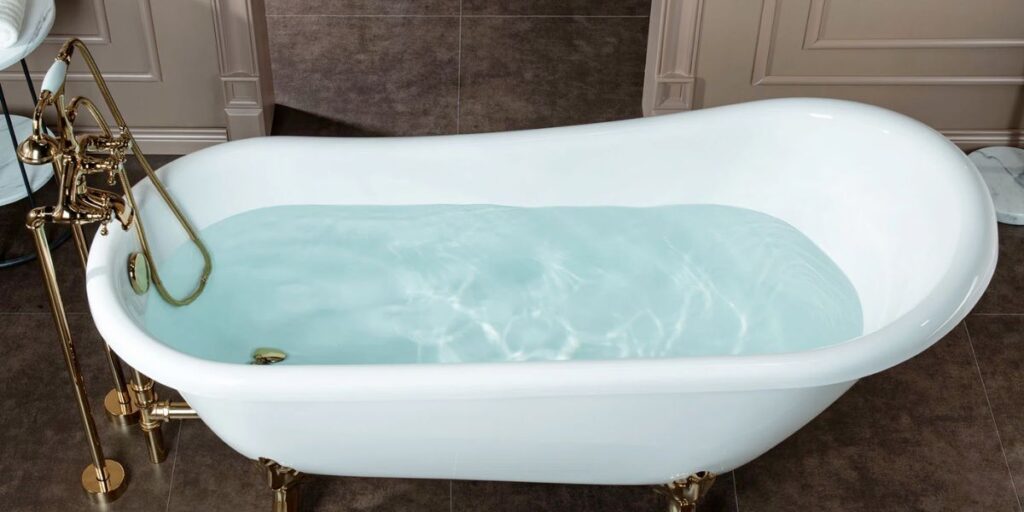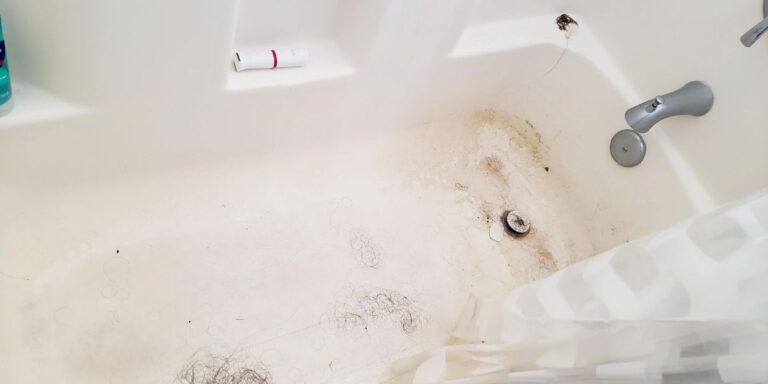How Long Do Fiberglass Bathtubs Last?
If you’re looking to remodel your bathroom, one of the biggest decisions you’ll make is what type of bathtub to install. Fiberglass bathtubs have grown in popularity over the last few decades as an affordable and low-maintenance option. But like any material, fiberglass eventually shows signs of wear. So how long can you expect a fiberglass bathtub to last before needing to be replaced?
In general, with proper care and maintenance, a quality fiberglass tub can last 10-15 years. Now I know that’s a big range. Let’s break down the factors that affect longevity so you can better estimate the lifespan of your fiberglass bathtub.
What is a Fiberglass Bathtub?
First, let’s start with what exactly fiberglass bathtubs are made of. Fiberglass tubs are constructed from tiny glass fibers suspended in a thick resin. The glass fibers provide strength while the resin makes the tub watertight. During manufacturing, the fiberglass layer is backed by additional structural support and insulation.
Compared to old-fashioned cast iron or steel tubs, fiberglass is lightweight yet durable. The material is also cheaper than luxury acrylic bathtubs. But fiberglass can lack the glossy surface and elegance of acrylic. Still, with proper care, fiberglass offers homeowners years of reliable soak time.
See more Are Kohler Tubs Fiberglass Or Acrylic? Which One Is Best?
Typical Lifespan of Fiberglass Bathtubs

The average fiberglass tub will last between 15-25 years. Now I know that’s a wide range. Let’s look at the factors that determine where your tub will fall in that lifespan.
On the low end, cheaper fiberglass tubs may start showing signs of damage after 10 years. With careful maintenance, a high-quality fiberglass tub could potentially even go 30+ years before needing replacement.
How does that compare to other tub materials? Cast iron bathtubs are practically indestructible and can serve homeowners faithfully for 50+ years. Acrylic tubs also often last 25-30 years. So fiberglass falls somewhere in the middle in terms of overall lifespan.
| Type of Bathtub | Typical Lifespan |
|---|---|
| Fiberglass | 15-25 years |
| Acrylic | 25-30 years |
| Cast Iron | 50+ years |
| Porcelain Enameled Steel | 30+ years |
| Cultured Marble | 25+ years |
What Impacts the Longevity of Fiberglass Bathtubs?
There are several variables that affect how long your fiberglass bathtub will last:
- Manufacturing Quality – Better materials and construction means longer lifespan. Be wary of the cheapest fiberglass tubs that may crack sooner.
- Frequency of Use – Bathtubs in frequently used guest baths or kid’s bathrooms tend to show wear sooner.
- Cleaning Products – Harsh cleaners can dull and damage the glossy surface over time.
- Sunlight Exposure – UV rays can cause fading, discoloration, and cracks.
- Scratches and Chips – Small dents are inevitable but should be repaired to avoid bigger issues.
- Improper Installation – Cracks may form if the tub is not fully supported.
Let’s explore these factors a bit more in-depth so you know what to look out for.
One of the biggest factors determining lifespan from the start is the quality of the original manufacturing and materials used. Cheaper fiberglass tubs are often thinner and prone to cracking earlier. Spend a little more upfront if you want your tub to make it to the 20 year mark.
How your tub is used also affects longevity. Is it the main family bathroom getting heavy use? Does it get filled to the brim with rowdy kids? More users mean more potential for scratches and cracks over time. Less traction from wet feet could lead to chipping along the edges too.
Now let’s talk cleaning and maintenance. What products you use make a big difference. Avoid abrasive cleaners, scouring pads, and super harsh chemicals. Acetone nail polish remover will eat right through fiberglass! Stick to gentle cleaners made specifically for tubs.
Exposure to direct sunlight leads to fading, yellowing, and eventually cracking. Make sure to close curtains or blinds when natural light beams through. Also, watch out for damage from hair dye or self-tanners staining the surface.
Speaking of damage, small scratches and chips are inevitable over decades of use. Don’t ignore little dents – seal and repair them promptly to prevent expanding cracks. You can often easily fix chips yourself with a fiberglass repair kit.
Finally, improper installation can mean cracks form sooner if the tub isn’t fully supported underneath. Hire experienced pros for a smooth long-lasting installation.
See more Can You Paint a Fiberglass Bathtub? Breathe New Life into Your Bathroom
How to Extend the Life of a Fiberglass Bathtub?
Want to keep your fiberglass tub looking shiny and new for as long as possible? Here are my top tips for extending the lifespan:
- Clean gently with non-abrasive tub cleaner
- Avoid scouring pads, which can wear down gloss
- Inspect regularly for cracks and re-seal
- Use repair kits to fix chips when they happen
- Consider re-coating the surface every 2-3 years
- Limit hot baths, since heat accelerates wear
- Don’t drop heavy objects that could dent
- Install a tub mat for grip and prevent scratches
Get in the habit of inspecting your tub every few months for early signs of cracks and leaks. Watch for rust-colored stains forming along the bottom too. Re-seal cracks promptly with epoxy to prevent further damage.
Every couple of years, consider re-coating the surface of the tub with a fresh gloss layer. This protects the underlying fiberglass and makes the tub look brand new!
Be gentle during use too. Avoid baths hotter than 130 degrees F which can damage fiberglass over time. And watch out for heavy shampoo bottles, razors or other objects falling into the tub.
Follow these care tips and you can easily gain those extra years of life from your fiberglass bathtub.
See more The Key Differences Between Acrylic and Fiberglass Bathtubs
When to Consider Replacing a Fiberglass Bathtub?
Even with good care, there will come a time when your fiberglass tub shows signs of wear indicating a need for replacement. Here are some clear indicators a tub is reaching the end of its lifespan:
- Visible cracks wider than a strand of hair
- Permanent stains that can’t be removed
- Significant dulled and faded glossy surface
- Slow draining or frequent clogs
- Mold or mildew growth around edges or bottom
- Major chips, holes, or structural issues
Cracks are one of the most common end-of-life signs. When the cracks expand wider than a hair strand and reach the bottom or walls, leakage is likely not far behind.
You can try re-sealing cracks, but if new ones keep appearing it’s time for a new tub. The same goes for stubborn embedded stains or a completely dulled glossy surface that can’t be revived with cleaning.
Slow draining and recurring clogs also indicate an aging fiberglass bathtub. Mold and mildew growth, especially along the caulked edges, present health concerns too.
Major structural damage like large holes, chunks missing, or a cracked base means the tub’s useful life is over. Even if repairs seem feasible, replacement is likely the wiser and longer-lasting option.
Cost of Replacing vs. Repairing Fiberglass Bathtub
Okay, so you’ve determined your old fiberglass tub needs replacing. Should you repair it instead? Let’s weigh the costs.
A brand new fiberglass bathtub could run you $200-800 depending on size and features. Plus $200 or more for professional installation. Of course, prices can vary based on your location too.
Refinishing or re-enameling an existing tub costs $300 to $900. Reglazing involves spraying a fresh top coat to revive the glossy surface. Results may only last 2-5 years.
Simple repairs like sealing cracks or fixing chips run lower, from $50-150. But keep in mind cracks often reappear and small repairs are temporary fixes.
If your tub is structurally sound but just showing surface wear, refinishing can make sense to extend its life 2-5 more years. However, if cracks, clogs, and leaks indicate underlying issues, replacement is likely the wiser investment.
Is a Fiberglass Bathtub Worth the Investment?
Given an average 15-25 year lifespan, are fiberglass bathtubs worth the investment compared to other options? Let’s weigh the pros and cons.
Pros:
- Lower upfront cost than acrylic or stone tubs
- Lightweight yet durable construction
- Wide range of styles and sizes are available
- Easy to clean and maintain
- Warmer to the touch than metal or porcelain tubs
Cons:
- Surface can scratch, fade and stain over time
- Not as glossy or luxurious as acrylic options
- Shorter lifespan than cast iron or acrylic tubs
- Can be loud, with creaking and echoing
Overall, the moderate upfront investment, low maintenance, and years of reliability make fiberglass a solid choice for most homeowners. You get significant bang for your buck from a fiberglass tub versus spending thousands more on fancier materials.
FAQs about Fiberglass Bathtubs
Here are answers to some frequently asked questions about fiberglass bathtubs:
How easy is it to clean a fiberglass tub?
Fiberglass is relatively easy to keep clean with regular gentle scrubbing using non-abrasive bathroom cleaners and soft cloths or sponges. Avoid scouring pads.
Can you repair chips and cracks in fiberglass yourself?
Yes, small chips and cracks can often be repaired using DIY fiberglass repair kits available at hardware stores. Follow instructions carefully.
What causes fiberglass tubs to peel and discolor?
Exposure to excessive moisture and humidity, strong cleaners, scratching, and sunlight can cause the top gelcoat layer to deteriorate and peel over time.
Can fiberglass tubs be refinished?
Yes, re-enameling or refinishing a fiberglass tub by spraying on a fresh top coat can extend its lifespan 2-5 years or more. Results vary based on existing conditions.
How much does it cost to replace a fiberglass tub? The typical range for replacing a basic 5-foot fiberglass tub with professional installation is $400 – $1,000, depending on size, features, and location.
Key Takeaways on Fiberglass Bathtub Longevity
Let’s recap the key points for getting the most years out of a fiberglass bathtub:
- With proper installation and care, expect 15-25 years of service. Higher quality equals longer lifespan.
- Frequency of use and cleaning methods impact longevity. Handle with care!
- Inspect regularly for cracks and promptly repair chips to prevent bigger damage.
- Re-coating the glossy surface every few years extends tub’s beauty.
- If cracked all over or permanently stained, it’s time to budget for a replacement tub.
- Compare costs of repairs versus new tub installation. At some point replacement is the better investment.
The bottom line is that fiberglass bathtubs offer homeowners decades of reliable use when properly cared for. While less indestructible than cast iron or steel tubs, fiberglass holds up well when installed correctly and maintained gently over the years. Keep an eye out for signs of wear, make timely repairs, and take steps to extend that glossy surface. Then you can relax and enjoy soaking in your fiberglass tub for the next 15-25 years!

William J. Bullock is a licensed plumber with over 15 years of experience installing and repairing bathtubs. He runs his own plumbing company in Greenville and serves residential and commercial clients. William is dedicated to providing honest, transparent advice to help homeowners make informed decisions about their bathroom renovations.
He has established expertise in selecting bathtubs, planning custom installations, diagnosing issues, and completing repairs. William aims to share practical tips and reliable recommendations based on extensive hands-on work. When he isn’t on a job site, William enjoys spending time with his family and volunteering at local community events. He takes pride in delivering quality service and enjoys helping people upgrade their homes.







